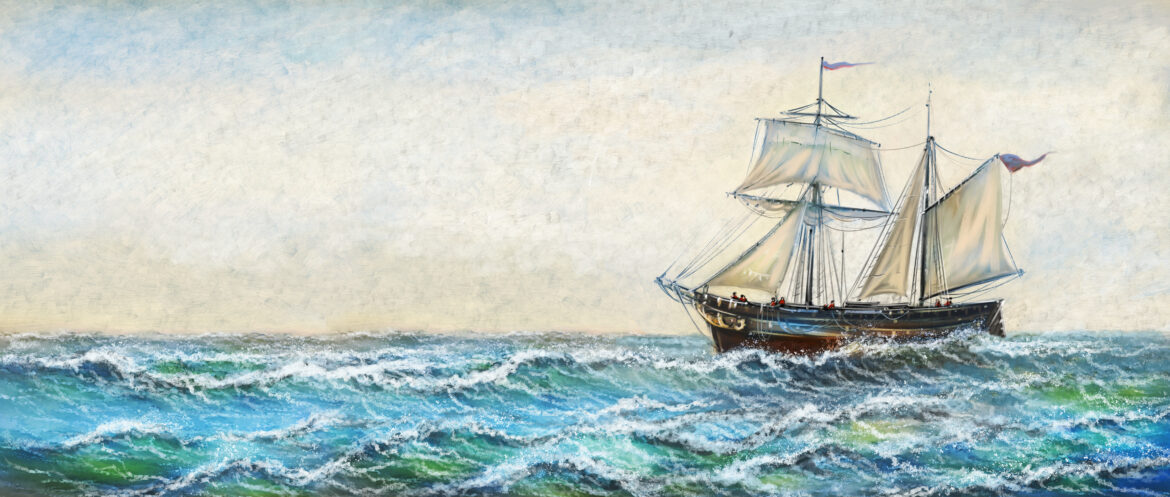During one of my first chapel services as a student at RTS-Orlando, Dr. John Frame played the organ to accompany our hymn singing. The first hymn we sang was “O the Deep, Deep Love of Jesus.” I don’t know if it was the first time I had heard that hymn, but I remember how the organ absolutely filled the chapel with the deep, somber, sonorous notes. As I sang out the lyrics, the awe and gravity of God’s love swallowed me whole. The melding of instrument, music, and lyric was a wonderful experience of worship.
This song was written by Samuel Trevor Francis (1834-1925) after a serious bout with depression. As his biographers tell the story, one winter night as a teen, Francis was walking across the Hungerford Bridge over the River Thames. He paused and stared down into the depths of the river below. He contemplated plunging into the icy waters and ending everything. But instead, John 3:3 came into his mind, “Truly, truly, I say unto you, unless one is born again he cannot see the kingdom of God.” Francis repented and this reformation of heart prompted him to begin writing poetry and lyrics. One of the songs that came from this was “O the Deep, Deep Love of Jesus.”
Initially, this song had four verses, though since its appearance in the 1911 The Song Companion to the Scriptures, it is usually shortened to three. The text echoes the Apostle Paul’s description of the strength required to “comprehend with all the saints what is the breadth and length and height and depth” of the love of Christ (Eph. 3:18). The picture is of a limitless ocean.
Herman Bavinck spoke of God as, “an immeasurable and unbounded ocean of being.”[1] The Puritan John Flavel (1627-1691), who ministered in the seaport of Dartmouth, often contextualized his ministry to the many seafaring men in the city. He wrote, “Another resemblance you have from the sea, the great abyss, that vast congregation of waters, whose depth no line can fathom: Veer out as much line as you will, you cannot touch the bottom. To this unfathomable ocean the pardoning grace of God is also resembled.”[2]
The depths of the ocean are a frequent metaphor for the immensity of God. It makes perfect sense when we realize how big the ocean is and how little of it we actually know. Samuel Francis utilized this imagery in picturing the love of Jesus. It was only the greater depths of Jesus’s love that were able to overwhelm the rivers of depression experienced by the teenaged Francis.
The love of Jesus is immense and active in pursing the sinner, “underneath me, all around me, is the current of Thy love.” The second stanza (usually excluded) points to the incarnation of this ocean of love in the person of Jesus Christ. The response to this love is found in the next stanza, “spread His praise from shore to shore.” The final stanza looks to the hope of the believer being lifted up into “an ocean vast of blessing… a heav’n of heav’ns to me.”
The hymn was originally set to the tune EVENING BLESSING, but it is most commonly set to the Welsh tune EBENEZER composed by Thomas John Williams (1869-1944) in 1890. The celebrated English composer Ralph Vaughn Williams called this tune one of the greatest in the repertoire. The history of it is a wild tale of legends and copyright infringement. It is usually listed in hymnals as EBENEZER (TON Y BOTEL). TON Y BOTEL is Welsh for “tune in a bottle” and refers to the legend of how this tune was discovered.
- Gwenlyn Evans published a tune by the name of TON Y BOTEL after hearing it hummed by people at a music festival. He then promoted the legend that this tune was found on the Welsh seashore in a bottle. When Williams heard Evans’s tune, he quickly realized that it was his EBENEZER. He confronted Evans about the theft of his tune. Evans, realizing he had no other option, apologized and negotiated a royalties agreement with Williams.
The hymnologist Erik Routley described this tune as “one of the noblest and striking examples of modern Welsh hymnody… It has an effect of accumulating grandeur that is almost hypnotic.” He describes it as having a majestic stride forming the same effect achieved by Bach in the Sanctus of the Mass in B minor, though somber whereas Bach is triumphant.[3] The deep swelling of the music rolls over again and again, giving the effect of being washed within the current of the ocean.
Taken together, the lyrics and the music serve to instruct not just the head but also the heart in the immensity of the love of God poured out for the Church in Jesus Christ. The oft excluded second verse shows us that love, “I, a wrecked and ruined creature, / Sinful, helpless, all defiled; / But the love of God in Jesus, / Made me God’s beloved child.” What a privilege it is in worship to contemplate the incomprehensible immensity of God’s love in Christ that “lifts me up to glory for it lifts me up to Thee.”
[1] Bavinck, Reformed Dogmatics, 2.123.
[2] Flavel, The Works of John Flavel, 4.152.
[3] Parry and Routley, Companion to Congregational Praise, with Notes on the Music, 208.

